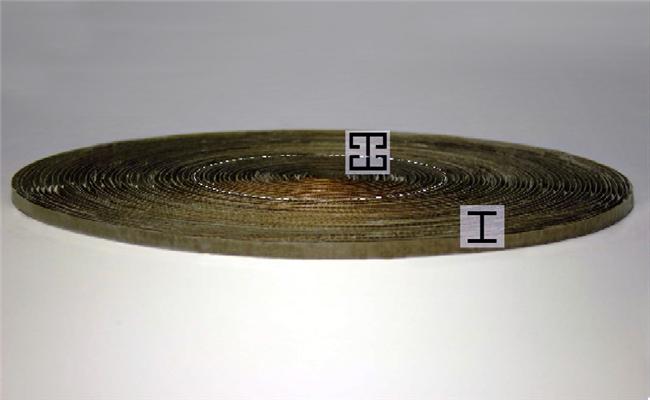The research published in New Journal of Physics outlines how the researchers utilized the special properties of metamaterials, a class of ordered composites which can distort light and other waves. Qiang Cheng and Tie Jun Cui of the State Key Laboratory of Millimeter Waves at Southeast University in Nanjing, China, designed and fabricated their omnidirectional electromagnetic absorber using 60 strips of circuit board arranged in concentric layers coated in copper. Each layer is imprinted with alternating patterns, which resonate or don’t resonate in electromagnetic waves.
The designed device can trap and absorb electromagnetic waves coming from all directions by spiraling the radiation inwards and converting its energy into heat with an absorption rate of 99%. Hence it behaves like an “electromagnetic black body” or an “electromagnetic black hole”.

Doesn't look like it will destroy the world in 2012, does it?
At the moment, the device only works with microwaves, but the researchers are planning to develop a black hole for visible light next.
The current results could find some applications in microwaves. As the researchers write, “The good agreement between theoretical and experimental results has shown the excellent ability for metamaterials as the candidate to construct artificial
omnidirectional absorbing devices.
“Since the lossy core can transfer electromagnetic energies into heat energies, we expect that the proposed device could find important applications in thermal emitting and electromagnetic-wave harvesting.”
Citation: “An omnidirectional electromagnetic absorber made of metamaterials”, Qiang Cheng, Tie Jun Cui, Wei Xiang Jiang and Ben Geng Cai, New J. Phys. 12 063006 doi: 10.1088/1367-2630/12/6/063006





Comments